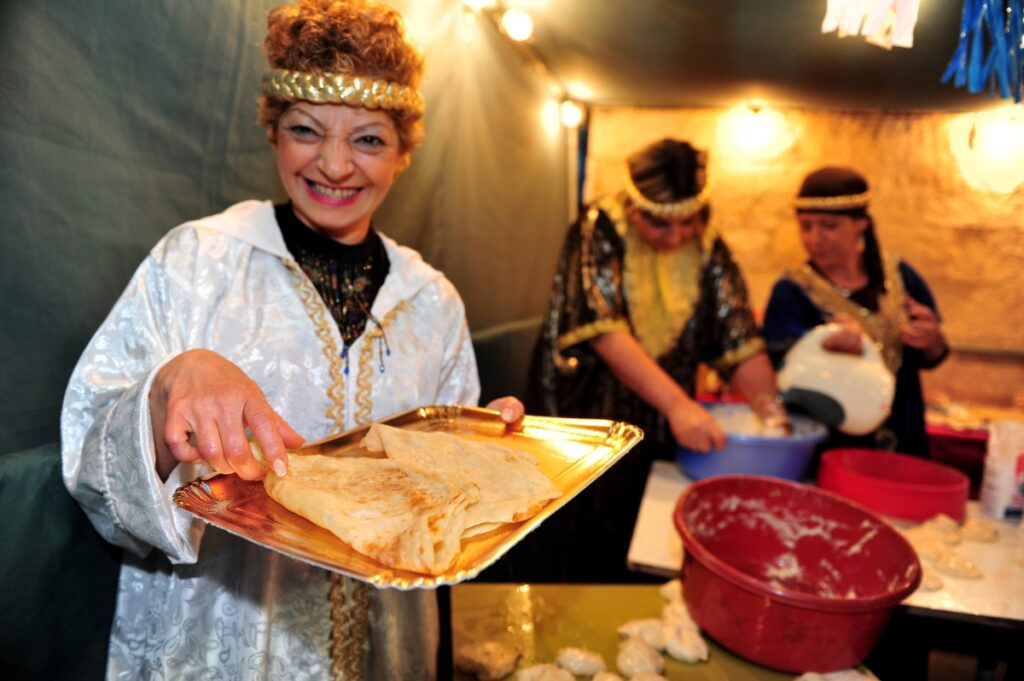Mimouna or Noche de Mimouna (in Moroccan Ladino) is a festival in the Moroccan Jewish tradition. It is a joyful celebration that expresses the spirit of the community the values of joy of life, Hachnasat Orḥim (hospitality), generosity, and friendship.
One understanding of Mimouna is the similarity between the Hebrew term for faith – Emunah and Mimouna. Mimouna is an expression of the faith in the emancipation of the Jewish people – and thus in the emancipation of all people.
Mimouna is also a celebration of spring and an expression of the optimism it brings along for a successful harvest and abundance in the world. This is the reason for decorating the house with wheat stalks and greens of all kind. Nissan – the month of Pesah, was actually the first month in the biblical calendar.
Mimouna is also an expression of the tolerance that can exist between Jewish and Muslim people. Indeed, throughout Morocco local neighbors used to bring trays with mufleta and other cookies to their Jewish neighbors, helping them celebrate the recommencement of hametz eating.
One humorous theory has a simple linguistic explanation. Mona means sweet roll, in Judeo-Spanish. Since we can start to eat bread at the end of Passover, we name it: Mi Mona = my sweet roll of bread. Mimouna is a joyous celebration, where tables are set up with symbolic food and sweets, and people go from house to house. Homes are decorated with flowers, wheat stalks, herbs and orange tree branches with blooming flowers (flores de azahar). Each guest is encouraged to enjoy the sweets on the table, and is welcomed with the traditional greeting: Tirbeḥu Utis’adu (success and good luck). The celebration at one’s home starts with the Havdalah LeMotzei Yom Tov (havdalah with just wine, not with spices and candle).
Download the PDF below to view the full ceremony and blessings.










